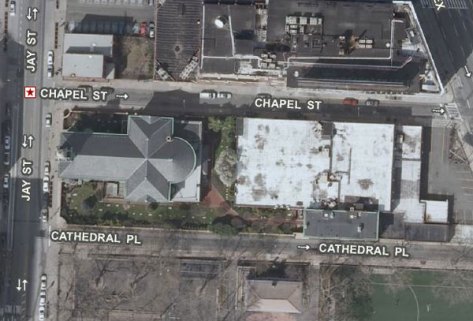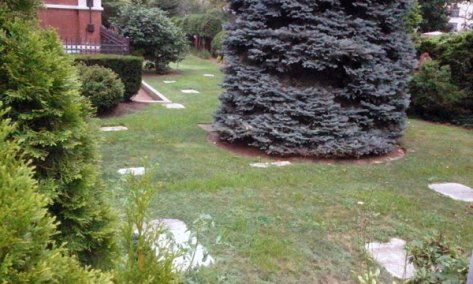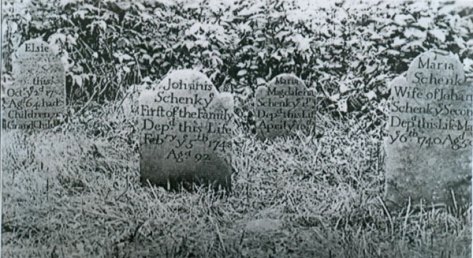The graveyard surrounding the Cathedral Basilica of St. James in downtown Brooklyn is believed to be the oldest Catholic cemetery on Long Island. St. James was founded in 1822 when a group of about 70 Brooklyn Catholics purchased property on the corner of Chapel and Jay Streets to establish a church and a place of interment. It was the first Catholic church built in Brooklyn and the first on Long Island. Shortly after the church was erected, the yard around it began to be used as a burial ground for clergy and laity. When the original ground was filled, more property was procured until the cemetery extended in a tongue back to about 100 feet of Bridge Street. Some 7,000 adults and children are said to have been interred in the graveyard between 1823 and 1849, when burials there were prohibited by law.
In 1900, about 200 tombstones were still standing in the graveyard at St. James, including a number of old wooden crosses and boards among the marble and red sandstone slabs; by 1914, all the wooden markers had disappeared and only about 100 tombstones were left. Many graves reportedly are beneath the rear of the church, covered over when the church was rebuilt and enlarged in 1902. Most of the markers that are still present in the churchyard today lie flat in the ground, preserved but hidden from passersby by the wall that surrounds the parish grounds.




Sources: “The Cathedral Ground,” Brooklyn Daily Eagle, Dec. 9, 1888; “The Catholic Church in the United States of America (Catholic Editing Co. 1914), 532-535; “A Village Churchyard,” Historical Records and Studies 7 (June 1914), 183-194; The Cathedral Basilica of St. James; Hopkins’ 1880 Detailed Estate and Old Farm Line Atlas of the City of Brooklyn, Vol. 2, Pl. H; NYCityMap


